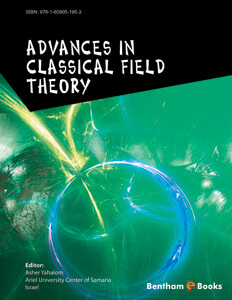Professor Asher Yehalom from the Ariel University Center talks about his book that was published in English

Classical field theory is used by physicists to describe a wide variety of physical phenomena. These include electromagnetism, fluid dynamics, gravity and quantum mechanics. The central entity of field theory is the field which is usually a collection of functions of space and time. These functions are usually grouped together as in the case of the electromagnetic theory and the theory of flows as vectors, in other cases they are grouped as tensors as in the theory of gravity and in other cases they are grouped as complex functions as in quantum mechanics. To know the value of the field you need to solve a system of partial differential equations together with boundary conditions and initial conditions. Both the equations and the initial and boundary conditions can be deduced in most cases from variational principles, although in some cases (such as in fluid mechanics) this is not obvious. A proper field theory must satisfy two main requirements: first, it must correctly describe the relevant physical phenomena, second, it must describe the phenomena with a minimal number of functions, equations and assumptions. Progress in classical field theory therefore has two main meanings. One meaning is an extension of a known theory in the sense that the proposed new theory covers a wider spectrum of physical phenomena. The second meaning of progress is that a given physical phenomenon will be described by fewer functions, equations or assumptions than previously required.
This book aims to present the recent progress in classical field theory in both senses. The book covers advances in electromagnetism, fluid dynamics, gravity, and quantum theory. Of course not every progression is covered in the book but a select group.
A final note regarding the meaning of the word "classic" in the current context. In classical field theory the fields are multi-component functions, in contrast to quantum field theory where the fields are multi-component operators. The bridge between the quantum and classical fields is a process called second quantization or through Feynman's path integrals. Quantum field theory is commonly used to describe elementary particle phenomena and is not discussed in this book.
I would like to take this opportunity to thank all the contributors to the current book, these include (in alphabetical order): Professor Binyamin Engelman, Dr. Yuri Luria, Dr. Gad Panahsi, Professor Yosef Panahsi and Dr. Marcelo Schiffer. Another thanks to Mr. Nathaniel Gabdanek for the careful preparation of the key to this book, and last but not least, thanks to Dr. Matthew Honan, the editor-in-chief, and Ms. Bushra Sidkaoui of Bentham Books Publishing for a fruitful collaboration.

7 תגובות
If I know Schrödinger's cat?
"Hello, hello", no more than that...
Familiar enough to spot the mistake in the name.
A book that reviews research done by others. Indeed, the level in Ariel is really that of a university!
A person,
Hope you understand that Adam Adam is joking. And to your question:
"This book should be extremely useful for researchers and working professionals in the field of theoretical physics".
To "Adam's" question: If you know Schlesinger's cat, the permit should not be a problem.
99.99% of the public does not understand anything about these issues
What is the level required of the reader?
Is it a popular science book or is an understanding of mathematics beyond a high school level required?
I had a call. Some said that Ariel College has a low level. In my opinion, this is an example that they deserve to be a university. They already receive research budgets through homeland security. The problem here is mainly international politics. Professor Pinhassi - internationally renowned. A university in YUS will not receive recognition and cooperation from universities abroad. In addition - the universities in Israel want to keep the budgets for themselves.